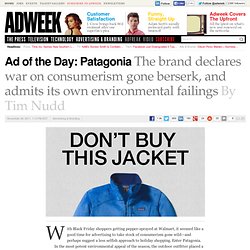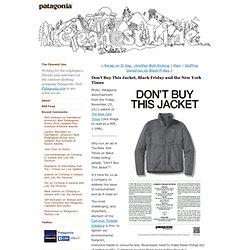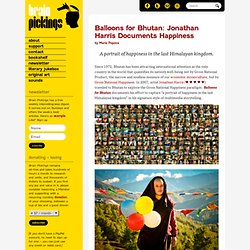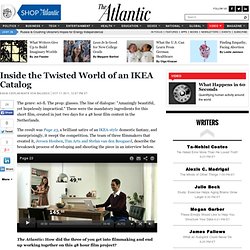

Ad of the Day: Patagonia Asks You to Please Stop Buying Its Products. With Black Friday shoppers getting pepper-sprayed at Walmart, it seemed like a good time for advertising to take stock of consumerism gone wild—and perhaps suggest a less selfish approach to holiday shopping.

Enter Patagonia. In the most potent environmental appeal of the season, the outdoor outfitter placed a full-page ad in The New York Times on Friday (and is repeating the messaging online today, for Cyber Monday) in which it asks people to buy less—of everything, including its own products. "Don't buy this jacket," says the headline, alongside the retailer's R2 coat. Copy then explains, in bracing honesty, how the R2—and everything else Patagonia makes—is bad for the environment. "The environmental cost of everything we make is astonishing," the ad reads. "And this is a 60% recycled polyester jacket, knit and sewn to a high standard; it is exceptionally durable, so you won't have to replace it as often.
The ad concludes: "There is much to be done and plenty for us all to do. Don't Buy This Jacket, Black Friday and the New York Times. Photo: Patagonia advertisement from the Friday, November, 25, 2011 edition of The New York Times (click image to read as a PDF, 1.5MB).

Why run an ad in The New York Times on Black Friday telling people, “Don’t Buy This Jacket”? It’s time for us as a company to address the issue of consumerism and do it head on. The most challenging, and important, element of the Common Threads Initiative is this: to lighten our environmental footprint, everyone needs to consume less. Businesses need to make fewer things but of higher quality. Customers need to think twice before they buy. Why? We’re placing the ad in the Times because it’s the most important national newspaper and considered the “paper of record.” But we’re in business to make and sell products. It’s part of our mission to inspire and implement solutions to the environmental crisis.
It would be hypocritical for us to work for environmental change without encouraging customers to think before they buy. The Auto Industry Embraces Its Own Disruption - Shelby Clark. By Shelby Clark | 11:49 AM November 23, 2011 In a flashback to our days on the playground, a growing number of consumers are embracing the idea of sharing.

People are sharing everything from apartments to designer dresses, and the surge in popularity has given rise to what has been called the “sharing economy.” This movement is reshaping the way people are consuming, and disrupting many established industries in the process. While some affected industries are fighting the changes, the automotive industry actually appears to be encouraging the disruption. By participating in their own disruption, forward-thinking players are positioning themselves to thrive in an evolving environment. A category that has led the charge in the growing sharing movement is carsharing. Consumer preferences are changing. Balloons for Bhutan: Jonathan Harris Documents Gross National Happiness. By Maria Popova A portrait of happiness in the last Himalayan kingdom.

Since 1972, Bhutan has been attracting international attention as the only country in the world that quantifies its nation’s well-being not by Gross National Product, the narrow and soulless measure of our economic monoculture, but by Gross National Happiness. In 2007, artist Jonathan Harris (♥ ♥ ♥ ♥ ♥) traveled to Bhutan to explore the Gross National Happiness paradigm. Balloons for Bhutan documents his effort to capture “a portrait of happiness in the last Himalayan kingdom” in his signature style of multimedia storytelling. Harris asked 117 people of various ages, occupations, education levels, and social status five questions related to happiness: What makes them happy; what is their happiest memory; what is their favorite joke; what is their happiness level on a scale of 1 to 10; if they could make one wish, what would that be.
Here’s an excerpt from Harris’s 2007 EG / TED talk, where he talks about the project: Changing the world, 3things at a time. Slavery Footprint - Made In A Free World. Inside the Twisted World of an IKEA Catalog - Kasia Cieplak-Mayr von Baldegg - Video. The genre: sci-fi.

The prop: glasses. The line of dialogue: "Amazingly beautiful, yet hopelessly impractical. " These were the mandatory ingredients for this short film, created in just two days for a 48 hour film contest in the Netherlands. The result was Page 23, a brilliant satire of an IKEA-style domestic fantasy, and unsurprisingly, it swept the competition.
The team of three filmmakers that created it, Jeroen Houben, Tim Arts and Stefan van den Boogaard, describe the breakneck process of developing and shooting the piece in an interview below. The Atlantic: How did the three of you get into filmmaking and end up working together on this 48 hour film project? Jeroen Houben, Tim Arts and Stefan van den Boogaard: Tim and Stefan both work as ad men at Mortierbrigade, a Brussels advertising agency. How does having a time limit and rules affect creativity? You are forced to make some very impulsive decisions. Move away from Page 23.